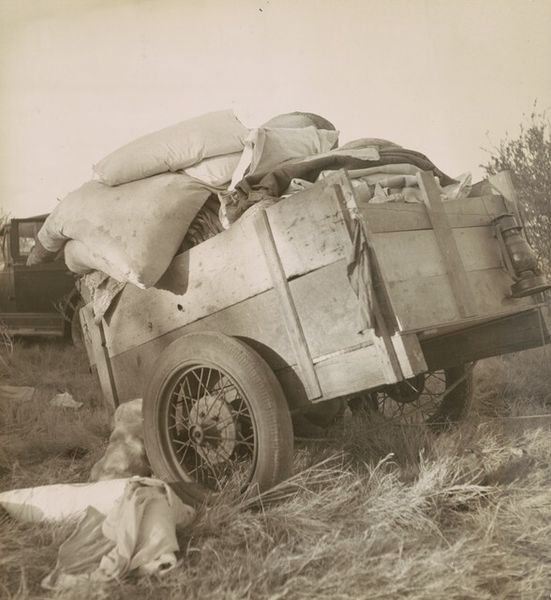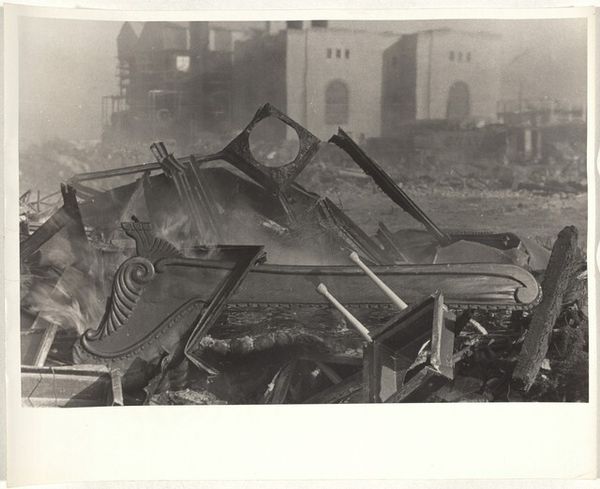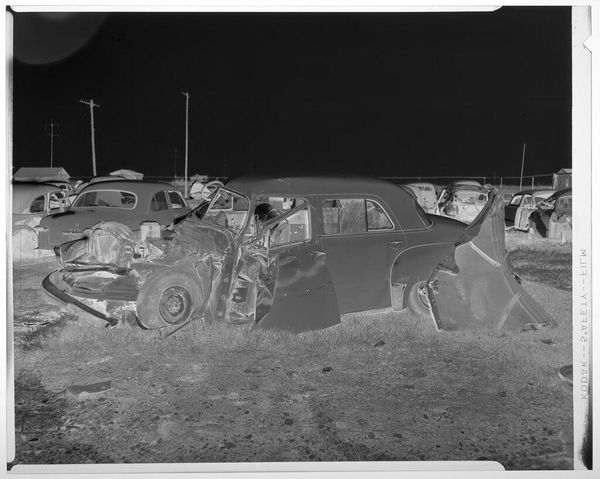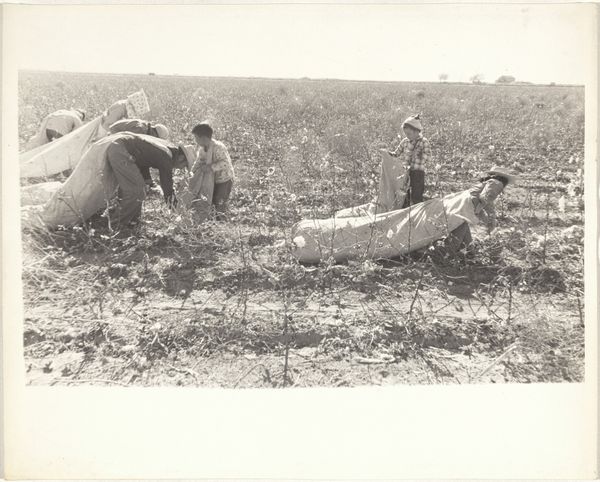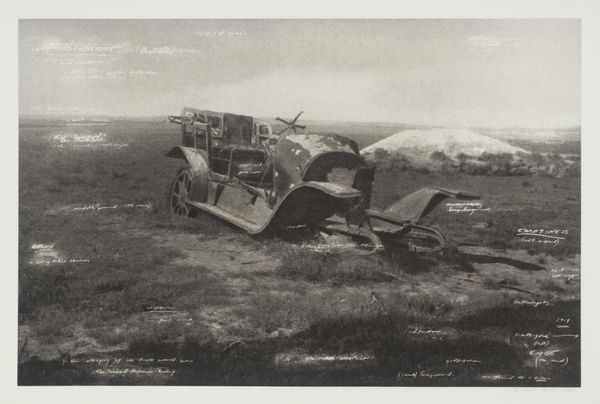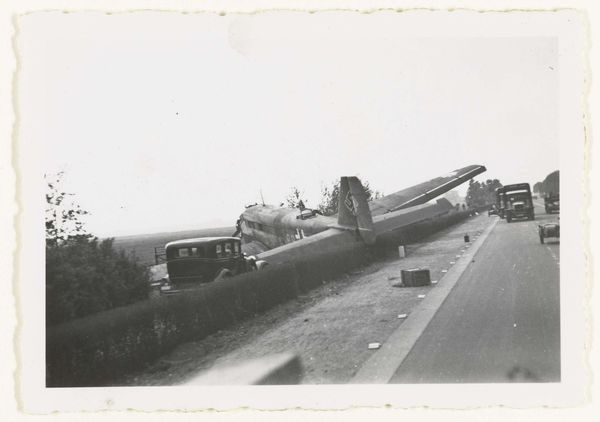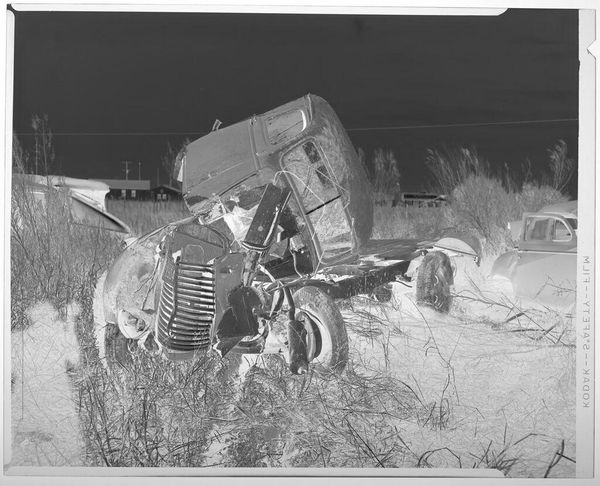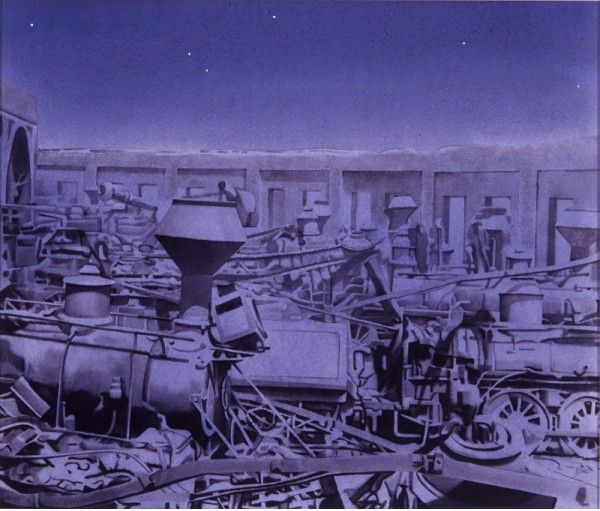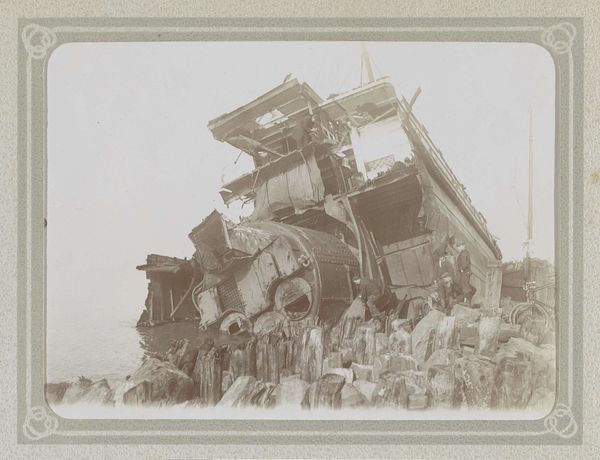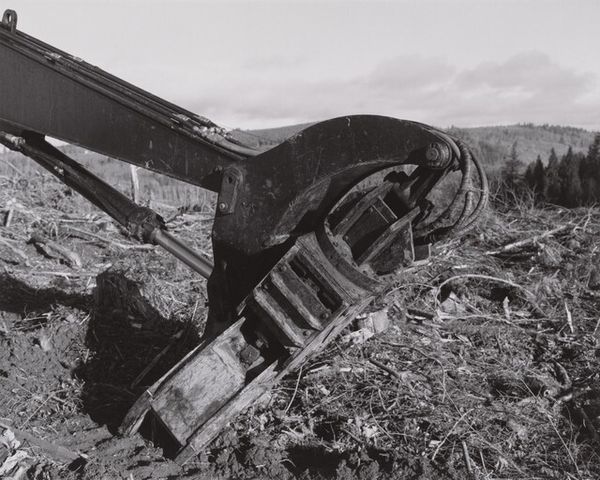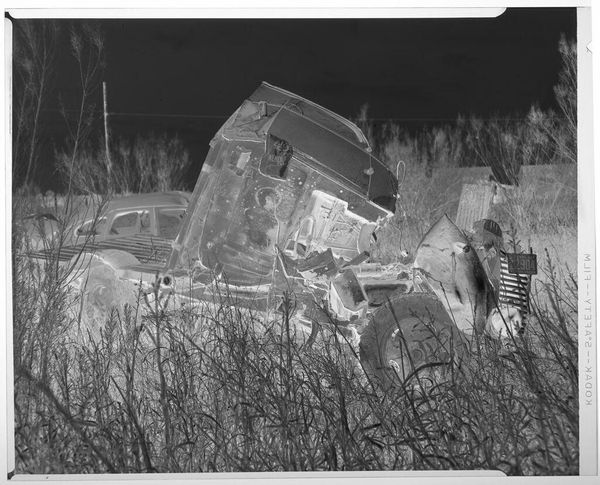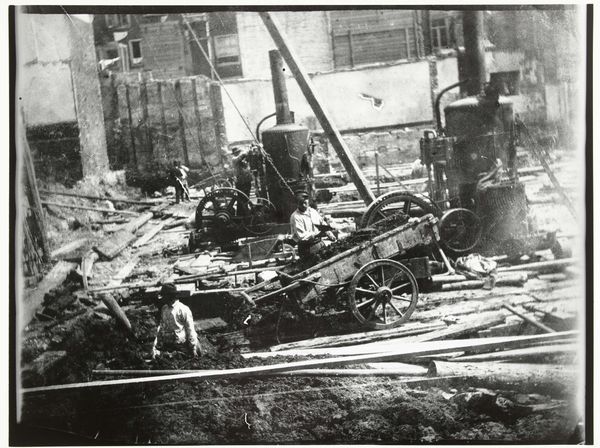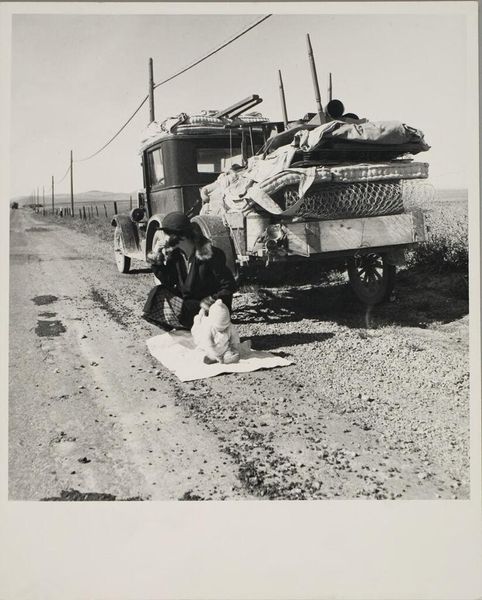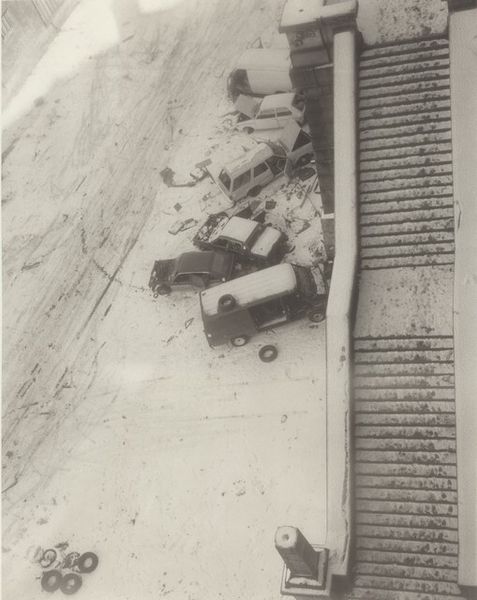
photography, gelatin-silver-print
#
war
#
landscape
#
outdoor photography
#
photography
#
gelatin-silver-print
#
monochrome photography
#
realism
#
monochrome
Dimensions: height 10 mm, width 7 mm
Copyright: Rijks Museum: Open Domain
Editor: Here we have an anonymous gelatin-silver print, simply titled "Foto behorend bij album Kriegserinnerungen," placing it within the period of 1940 to 1945. It’s a stark, monochrome image dominated by what appears to be an overturned military vehicle in a barren landscape. There's a real sense of desolation. What story do you think this image is trying to tell? Curator: It's fascinating how seemingly simple images like this can unlock complex narratives. Looking at it from a historical perspective, the photo speaks volumes about the realities of war – beyond the battles, beyond the grand strategies. This wrecked vehicle, isolated in the landscape, serves as a potent symbol of the destruction and the human cost that is always present during socio-political clashes. Who do you imagine was the intended audience for this? Editor: I hadn't really thought about the audience, I suppose, military personnel maybe or even as war documentation for public archives. Curator: Exactly. Consider also how the circulation of images like this – their suppression or their widespread distribution – could influence public opinion, construct a specific wartime narrative. War photography can be a powerful tool for propaganda, for creating heroes or highlighting suffering. What do you think it conveys? Triumph or Trauma? Editor: Definitely trauma. Seeing it now in the museum makes you really question how different groups experienced this war. Thanks. Curator: Absolutely. Museums are ideal public spaces to consider these works and share information and narratives related to traumatic public memories and to understand more fully these moments. Seeing how you initially responded to it shows how effective visual shorthand and history blend.
Comments
No comments
Be the first to comment and join the conversation on the ultimate creative platform.
